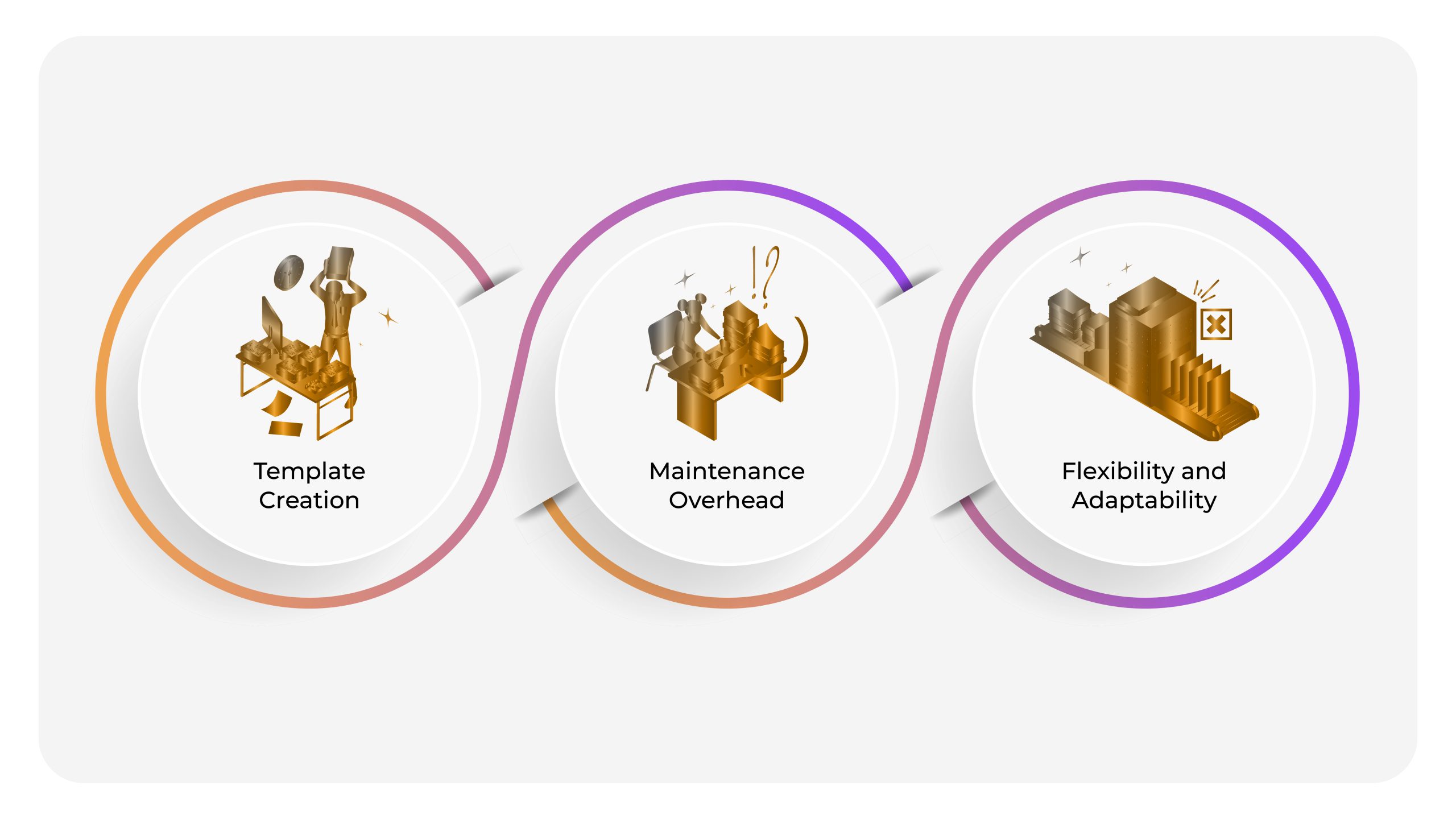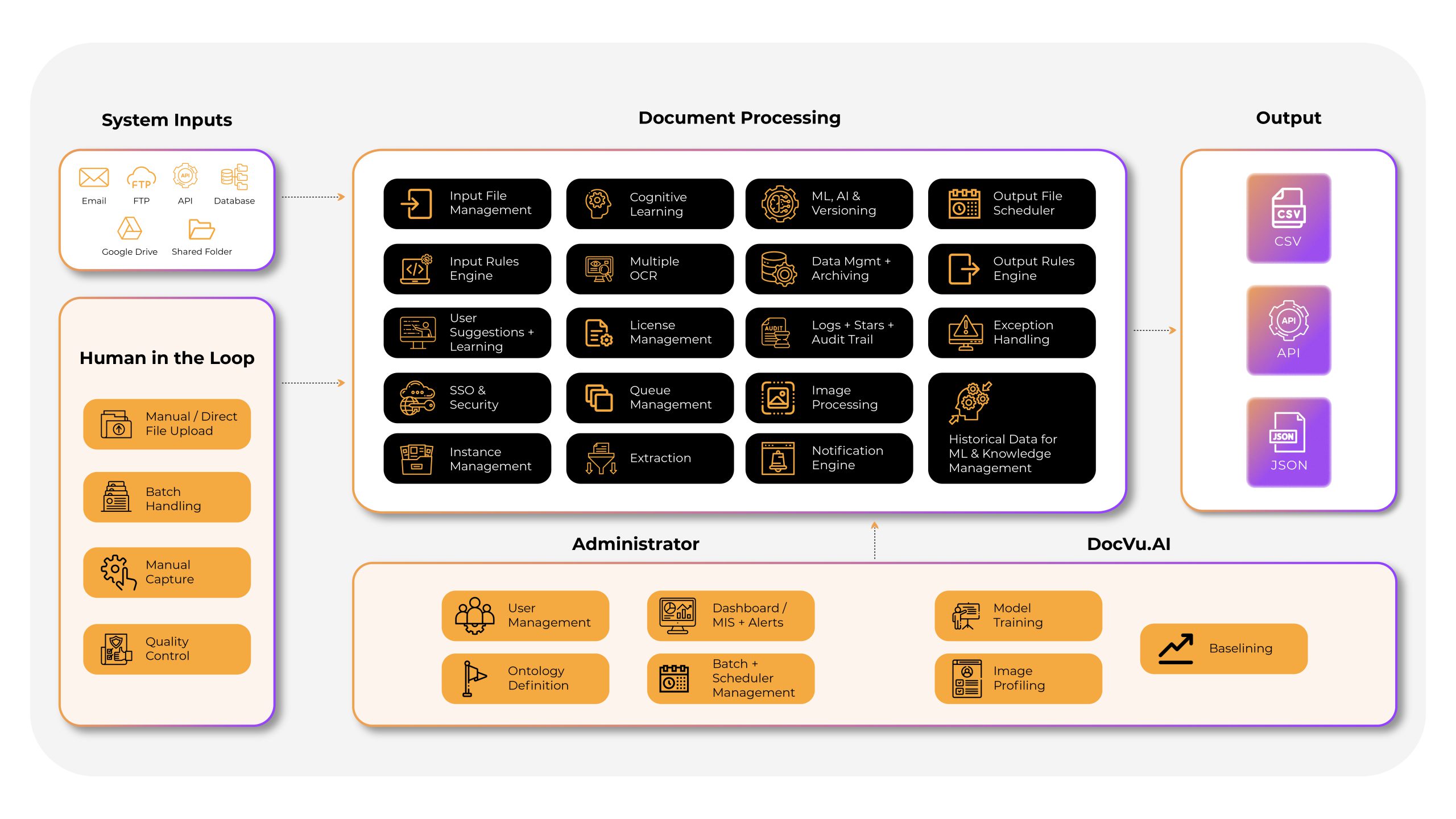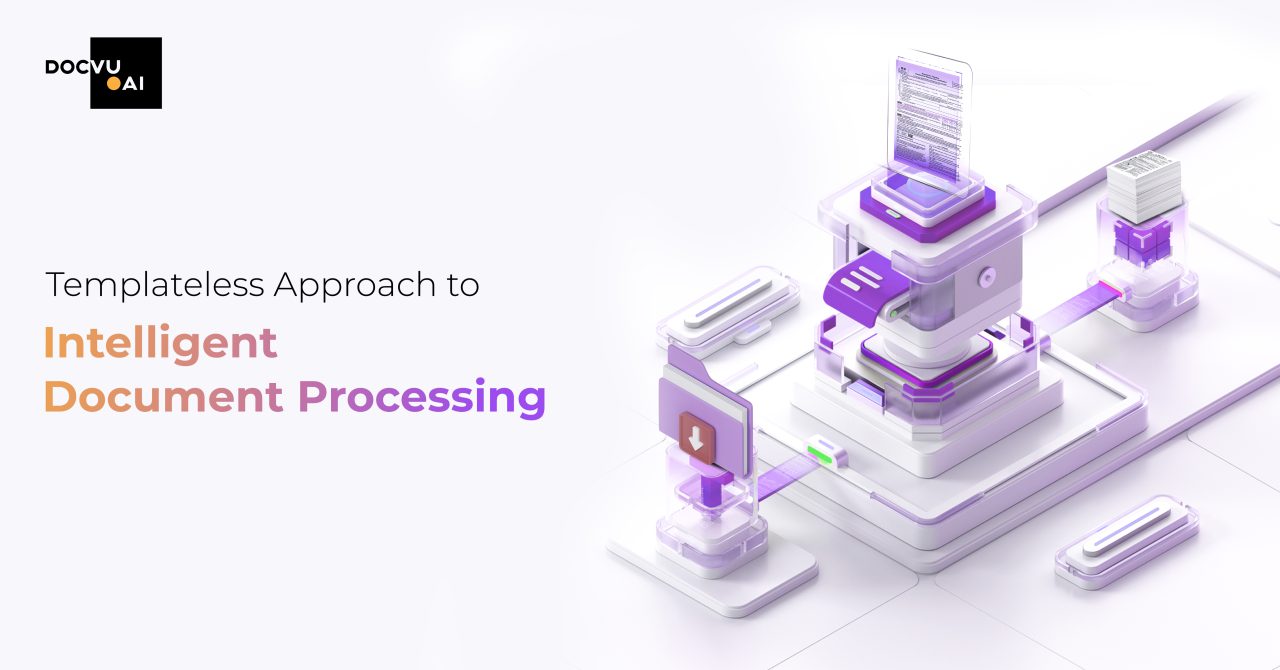One of the common challenges with most Intelligent Document Processing (IDP) solutions is their reliance on a template-led approach, which typically involves creating and maintaining individual templates for different document types and variations. While templates are effective for processing structured and standardized documents, they can fall short when dealing with documents that have extensive unstructured data. Around 80% to 90% of data is unstructured, lacking clear organization or formatting. This data, often referred to as ‘dark data’, presents a challenge as machines struggle to read or understand it due to the absence of identifiable patterns.
Here are some of the Issues associated with Template-led IDP Solutions:

Templates don’t Scale
Scalability is a critical factor that necessitates a templateless approach to data extraction in intelligent document processing.
While a template-based approach may be suitable for simple and low-volume use cases with minimal document type variation, it becomes impractical when dealing with complex scenarios. For example, automating the auto insurance claims process requires more than just extracting specific data such as name, address, and account number from a standardized claim form. It involves handling a wealth of additional information, such as photos, body shop estimates, and claims adjuster notes. Attempting to cover all possible permutations with templates would require an enormous number of templates, and the system would quickly fail as soon as a new document type is encountered.
To overcome these challenges associated with the template-led approach in IDP solutions, a templateless IDP approach has emerged as a viable solution. Templateless IDP leverages advanced technologies such as machine learning, deep learning, and natural language processing to extract data from identity documents without relying on predefined templates. Instead of using fixed templates, these systems are trained on large datasets to learn different document types’ underlying patterns, structures, and characteristics.
Templateless IDP systems become capable of handling a broader range of document formats, variations, and even previously unseen document types. This approach significantly reduces the need for manual template creation and maintenance, enabling faster implementation and easier scaling across different document types. It empowers organizations to process identity documents more efficiently, leading to improved accuracy and streamlined document processing workflows.
The Benefits of following a Templateless approach to IDP
In traditional template-based extraction approaches, users often expect some minimal training to make minor template changes. However, the reality is that users need to undergo training for each type of template, which can be a cumbersome process.
To illustrate this, let’s consider an enterprise that deals with hundreds of vendors monthly, each using different versions of invoices. Creating and maintaining templates for this diverse set of invoice documents becomes laborious. The number of consulting hours needed to establish templates for various document types can quickly accumulate, resulting in significant costs. The time and effort involved remain substantial even if the templates are developed internally. Unfortunately, during this ‘pre-automation phase’, enterprises do not yet reap the benefits of automation.
When we extend this example to encompass the range of document types that an enterprise needs to process for its business operations, it becomes evident that a template-led approach significantly prolongs the time required for automation. Furthermore, such an approach becomes relatively expensive when considering the costs associated with creating and maintaining these templates.
It is evident that adopting a ‘templateless approach’ in IDP can lead to a significant reduction in the Total Cost of Ownership (TCO) for the solution and enable faster time-to-automation. With this approach, there is no need to wait for an extended period solely for template creation without experiencing any real document automation. By relying on content rather than templates for extraction, minor changes in document structure require minimal or no training.
The processing of a similar set of documents with variations can be automated by utilizing a single document definition and ontology. We estimate a 30% to 70% reduction in setup time for defining a document (e.g., an invoice document) compared to the process of setting up a template for a specific document type and version in competing products that employ a template-led approach. This not only allows enterprises to start benefiting from document automation through IDP more quickly but also allows them to allocate the time and effort saved from creating numerous templates to more strategic and higher-priority tasks. Additionally, there are cost savings when professional services charges are involved.
Furthermore, the advantage of not having to create a new template for minor changes in a document that was previously processed using an existing template adds to the benefits. This eliminates the need for redundant template creation and streamlines the document automation process.
Get Up and Run Faster with a Unique, Templateless Approach
The templateless approach provided by DocVu.AI offers significant benefits, including a major reduction in set-up time and faster time-to-automation, compared to several competing IDP products. By adopting DocVu.AI, businesses can avoid creating and managing numerous document templates, which helps lower the Total Cost of Ownership (TCO) and accelerates time-to-value.
DocVu.AI Solution Architecture

AI/ML-enabled: DocVu.AI leverages advanced AI/ML capabilities and pre-built business rules to enable automated verification and validation of data, resulting in a higher percentage of Straight-Through Processing (STP) and improved accuracy in document processing. The solution continuously learns and improves through AI/ML algorithms and user inputs.
Scalability and Flexibility: DocVu.AI offers enhanced flexibility and scalability. It is designed to be horizontally scalable, making it suitable for cloud deployment. Depending on your organization’s specific requirements, it can be utilized as a SaaS or deployed on-premises.
Business User Focused: DocVu.AI provides an intuitive user experience tailored for business users. The easy-to-use Configurator and compelling UI allow business users to quickly achieve document automation. The solution offers browser-based access, ensuring faster document processing and a seamless user experience.
Seamless Integration: DocVu.AI seamlessly integrates with leading RPA products and other APIs, enabling end-to-end automation. By combining the power of RPA and IDP, unstructured data from documents can be ingested and converted into structured data, streamlining the automation process and enhancing overall efficiency.
Expanding through Intelligent Automation: The Case of a Major US Bank
In reality, users are adopting a combination of process- and data-driven approaches to achieve end-to-end process automation. By combining RPA and IDP, users can address both the “doing/execution” and “thinking” aspects of document processing.
An excellent example of this approach is a US bank that needed to digitize 30 million documents while acquiring six smaller banks. By leveraging a combination of RPA, IDP, and AI/ML tools, the bank successfully digitized, indexed, summarized, and classified these millions of documents in approximately six weeks. This automation effort resulted in a 50% reduction in operating expenses (OpEx) while achieving an auto-classification accuracy of 98%. The tangible business impact of this automation is evident, highlighting how such complex use cases cannot be effectively handled using fragmented or isolated automation approaches.
By adopting a mix of process- and data-driven automation, organizations can optimize their operations, achieve significant cost savings, and enhance accuracy and efficiency in handling large volumes of documents. This approach allows for a comprehensive and integrated solution that tackles the various aspects of document processing and empowers users to achieve end-to-end automation effectively.
Take the leap towards streamlined operations, enhanced efficiency, and increased productivity. Contact us today and embark on a transformative journey with DocVu.AI.






